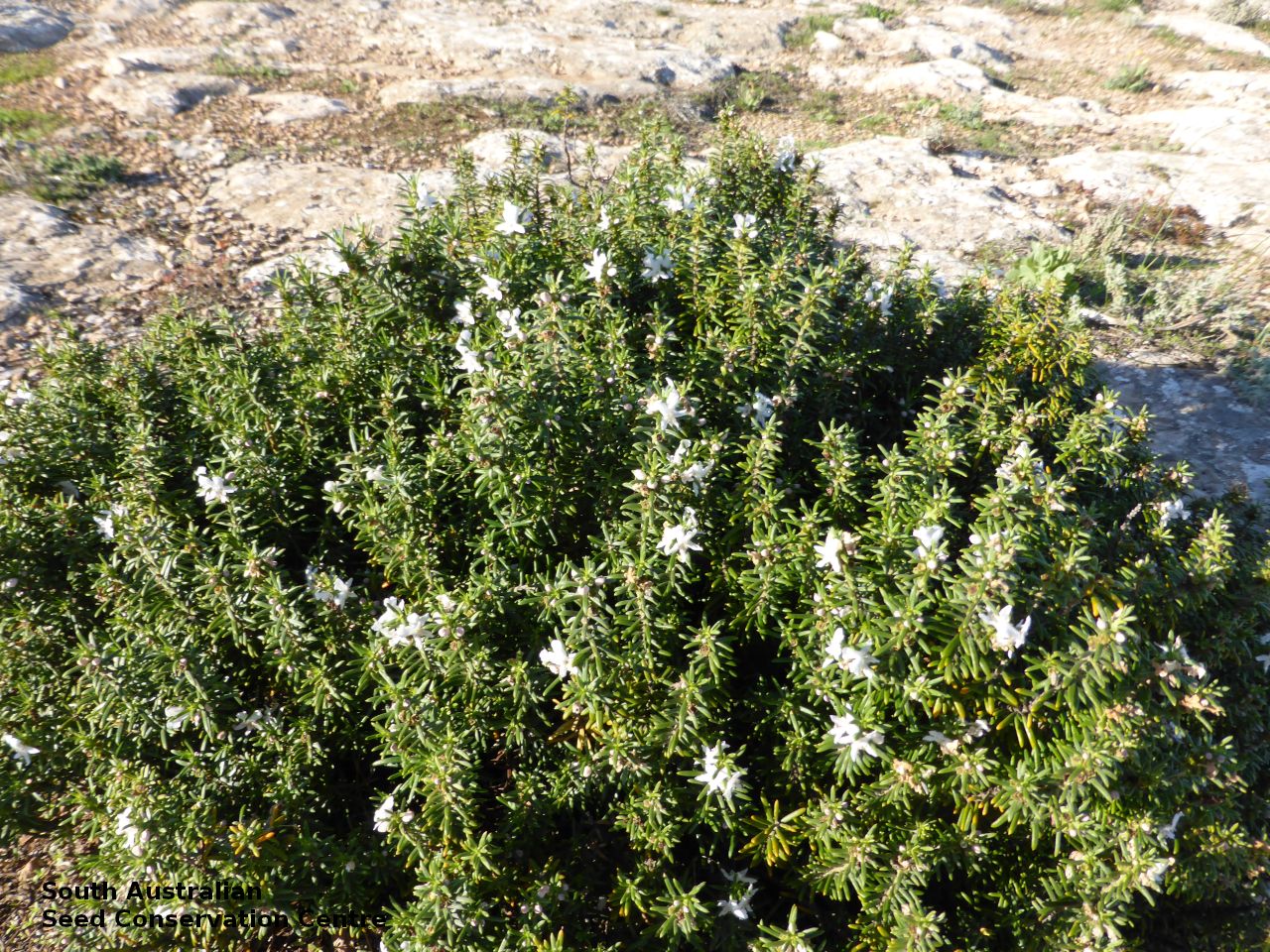
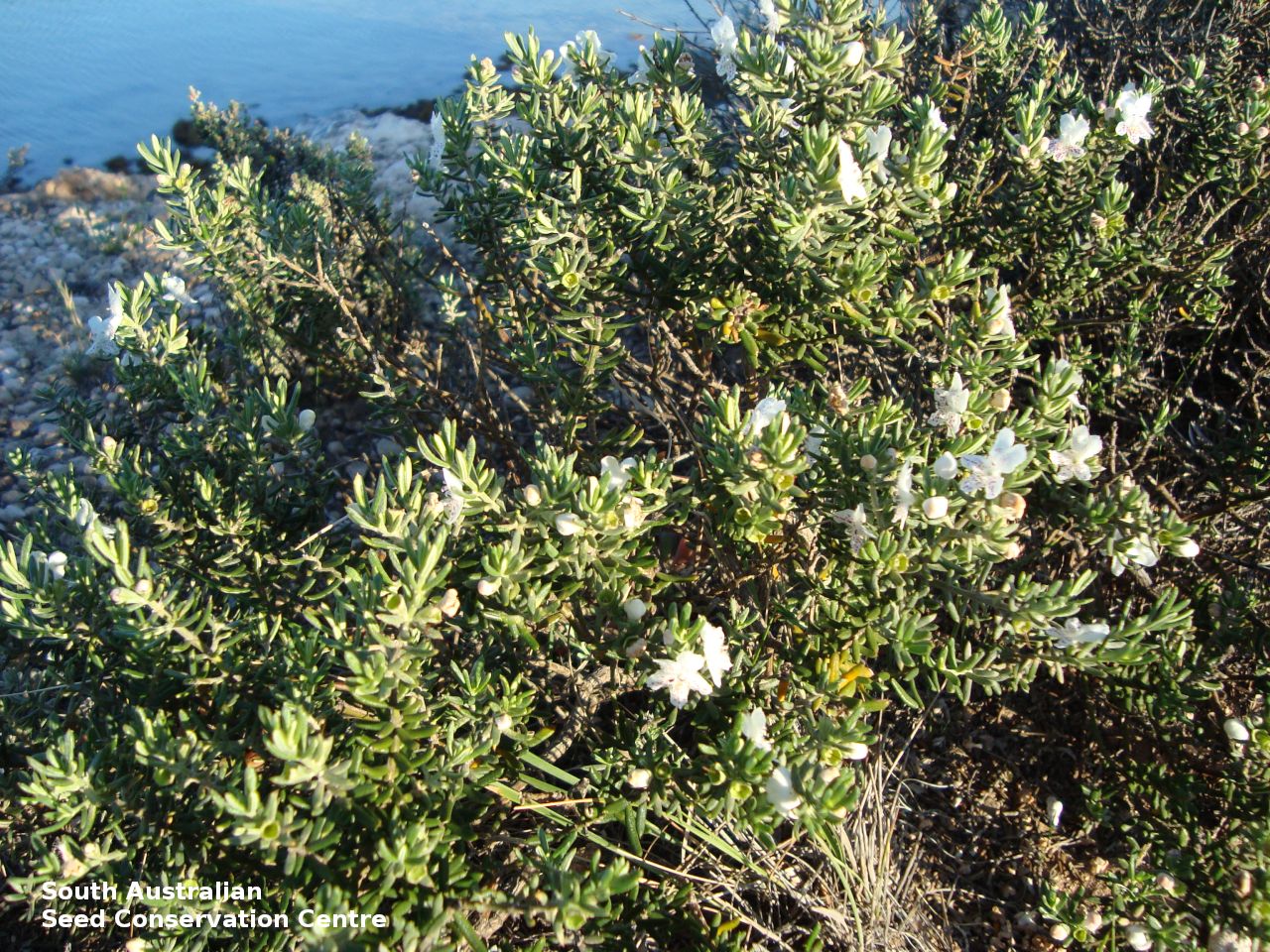
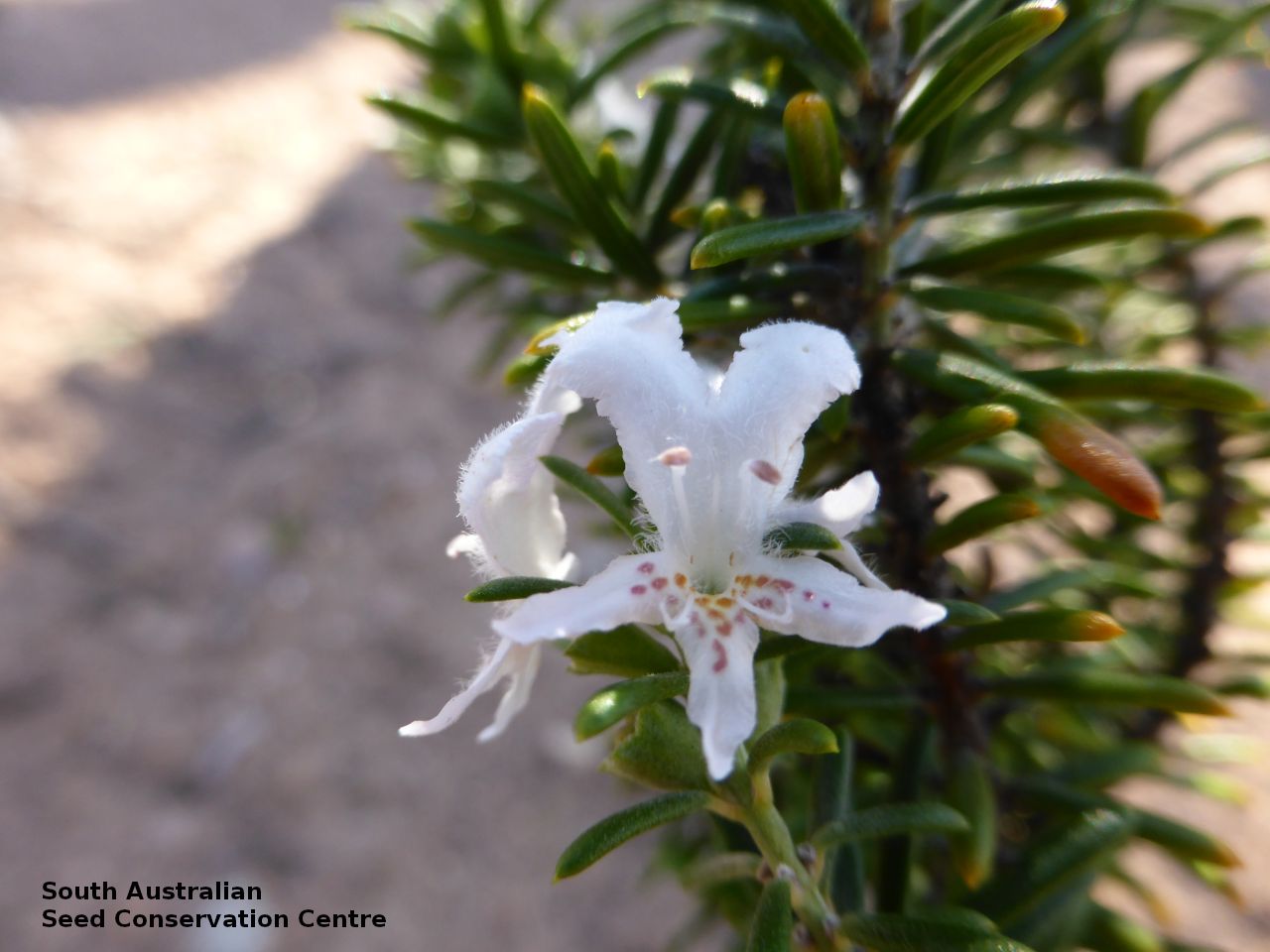
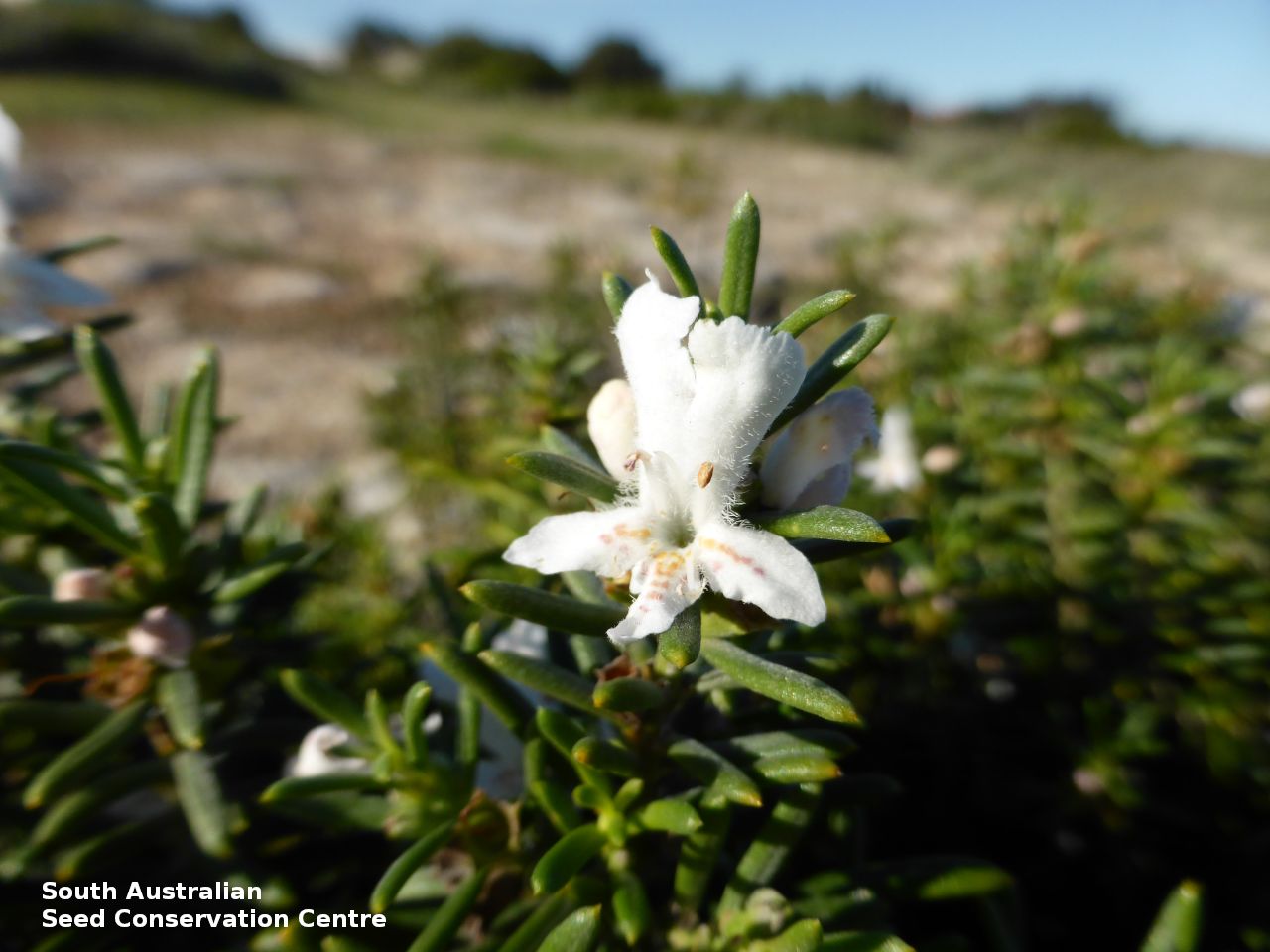
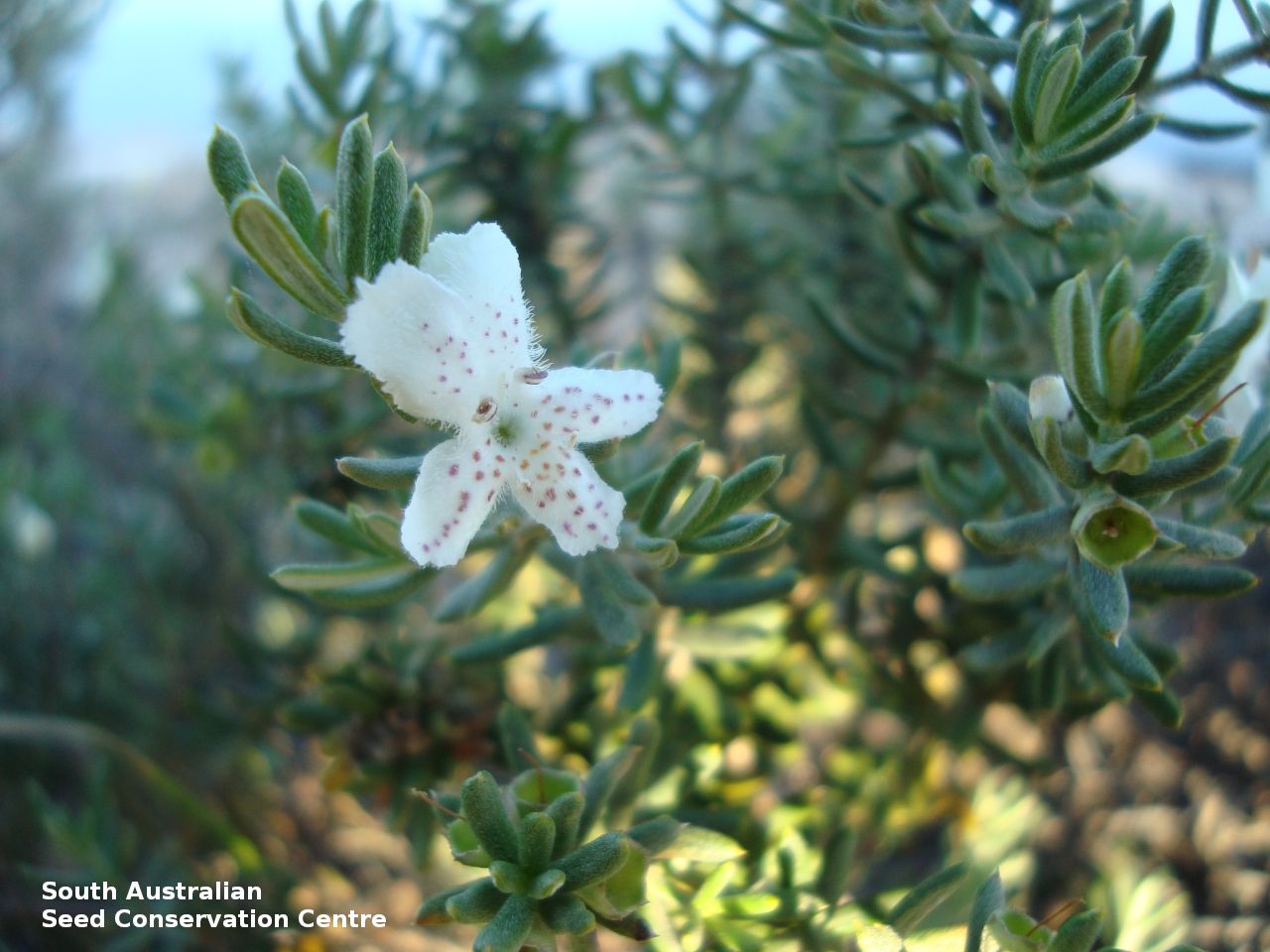
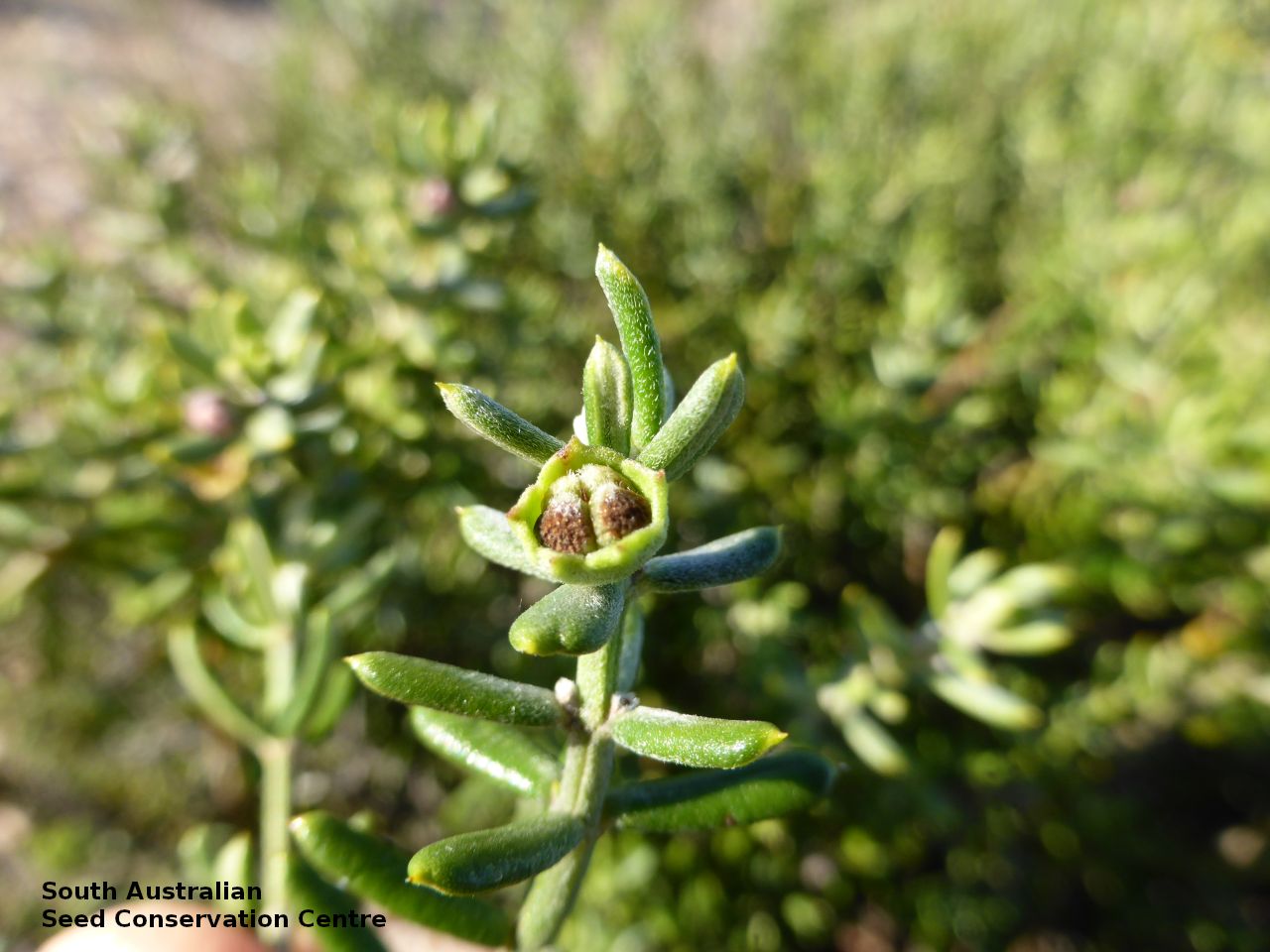
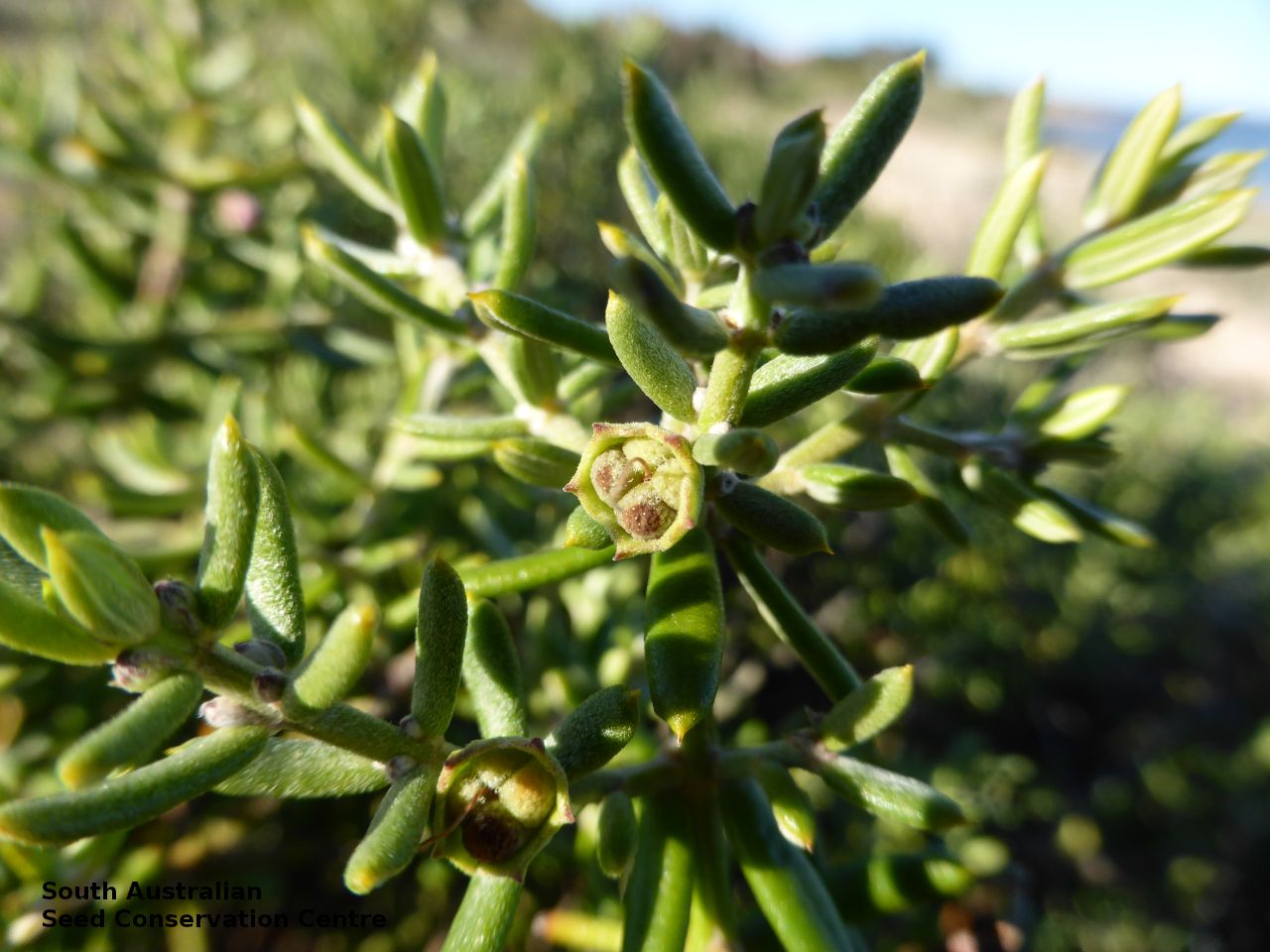
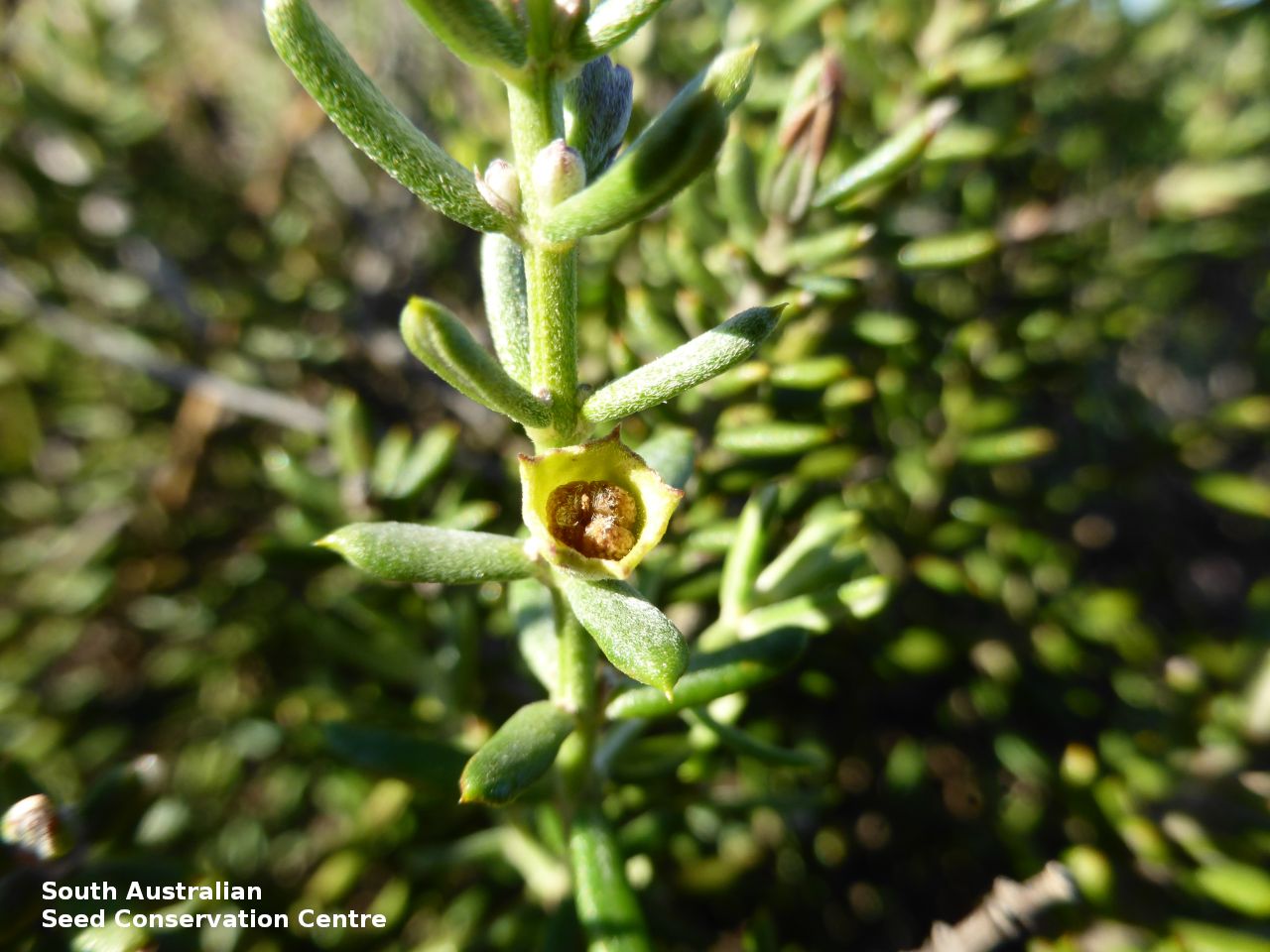
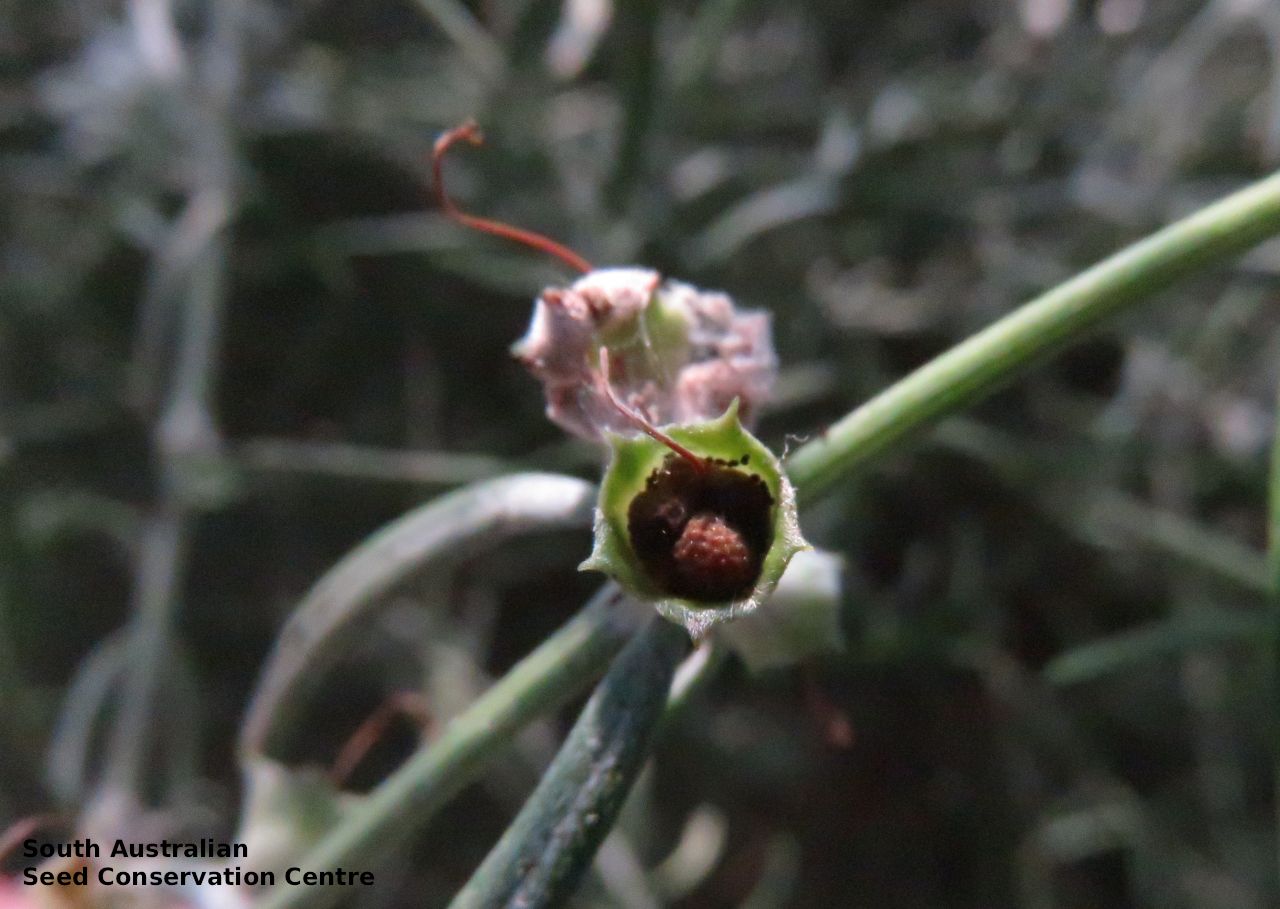
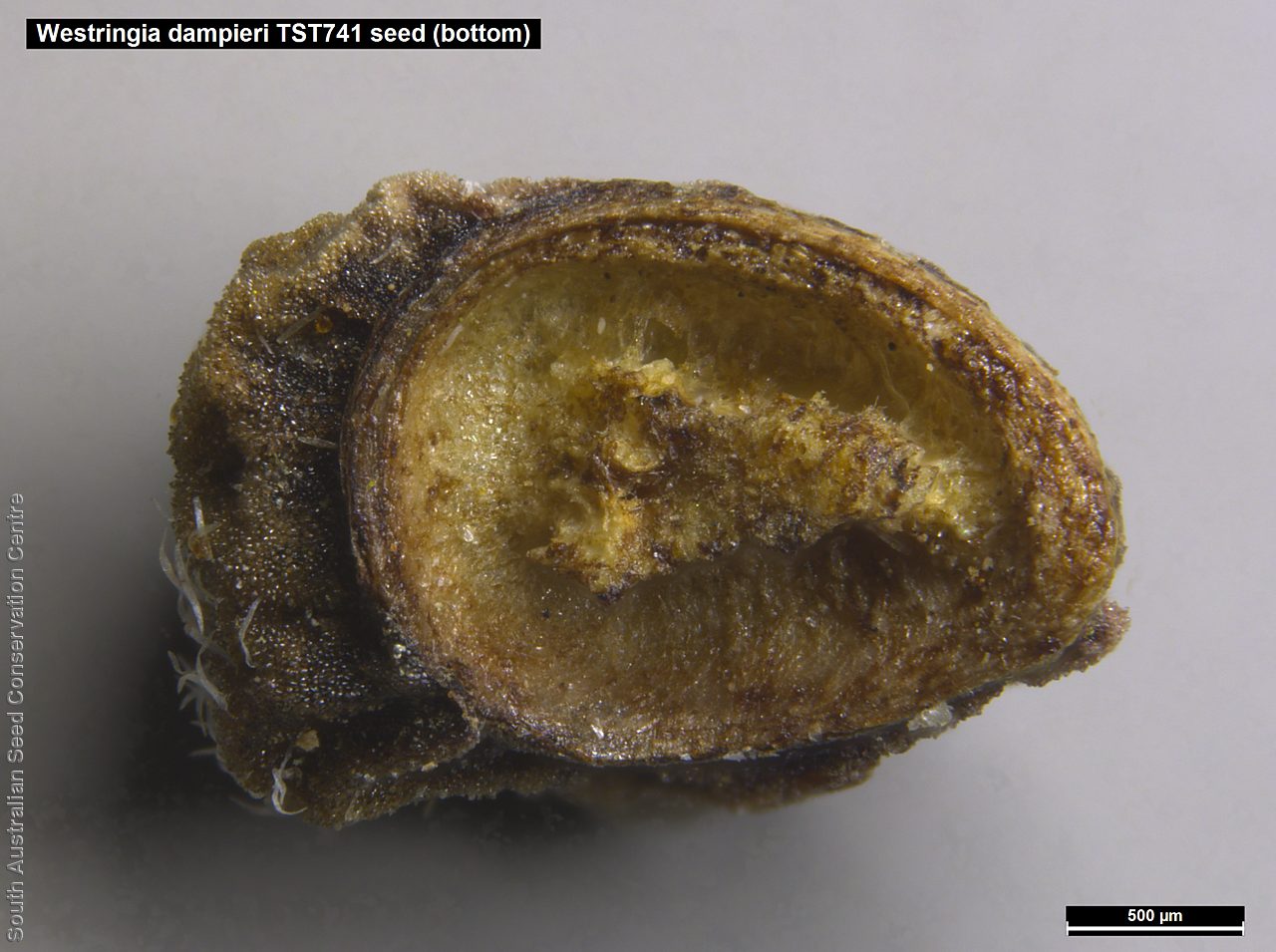
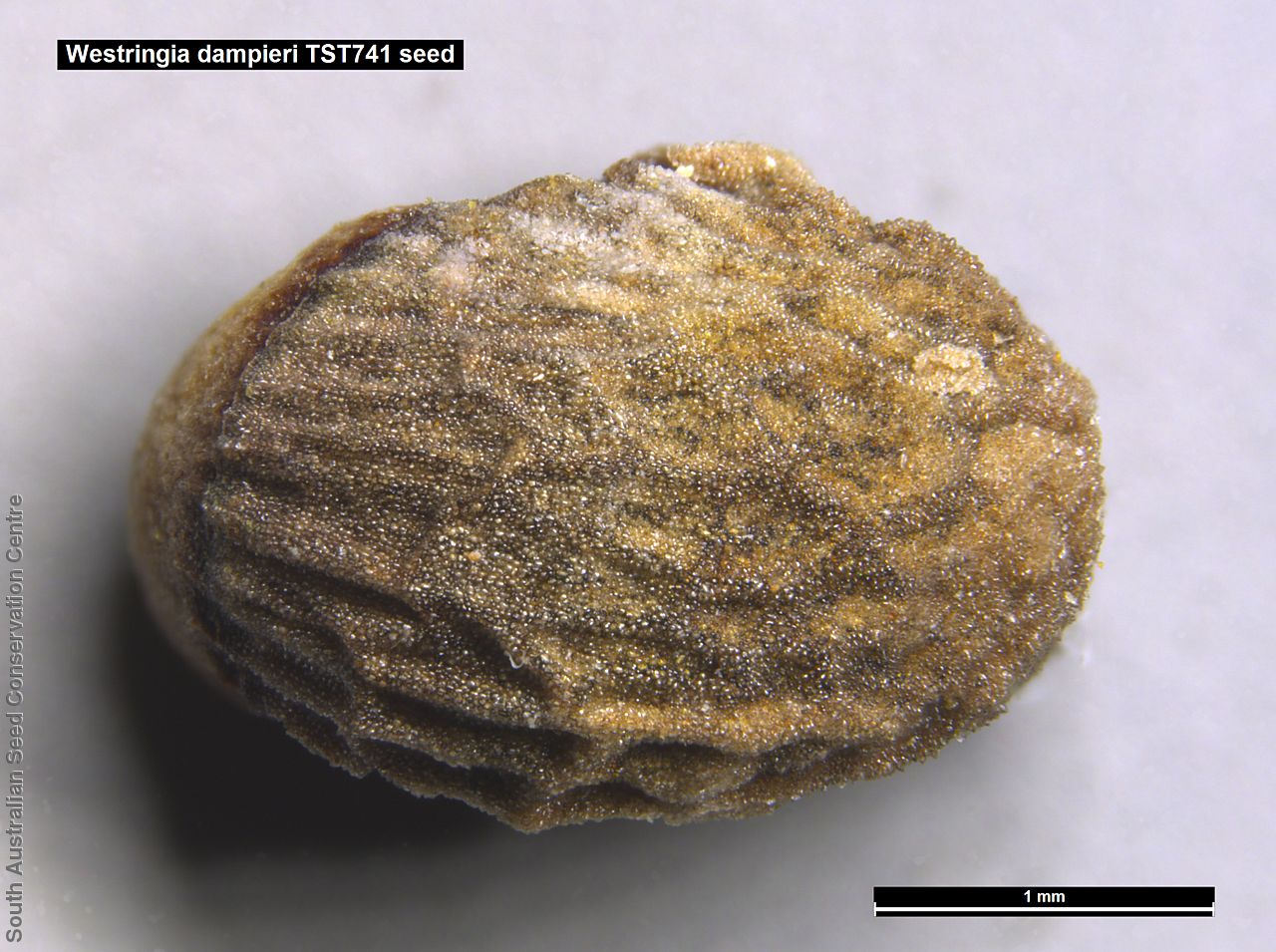
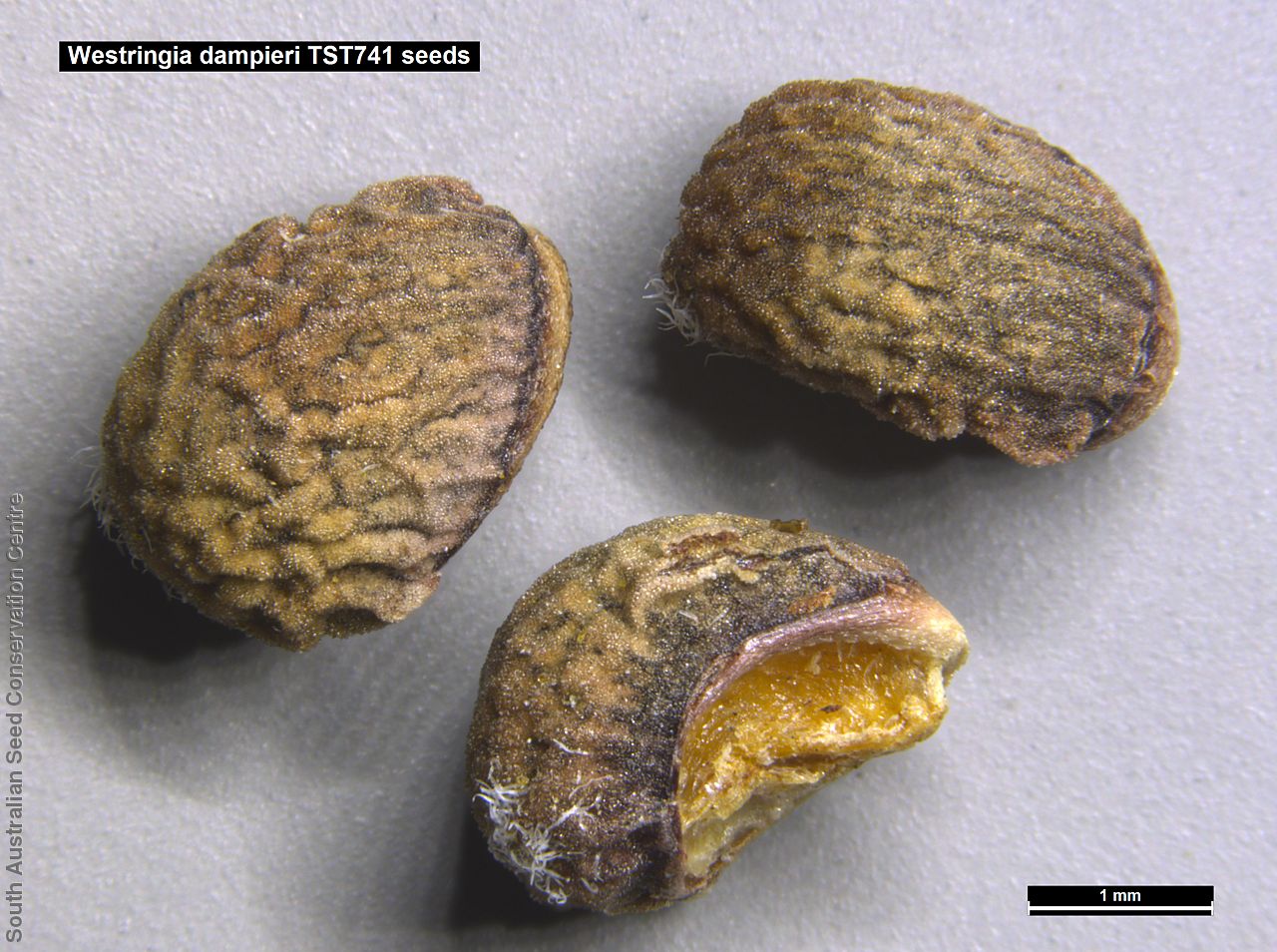

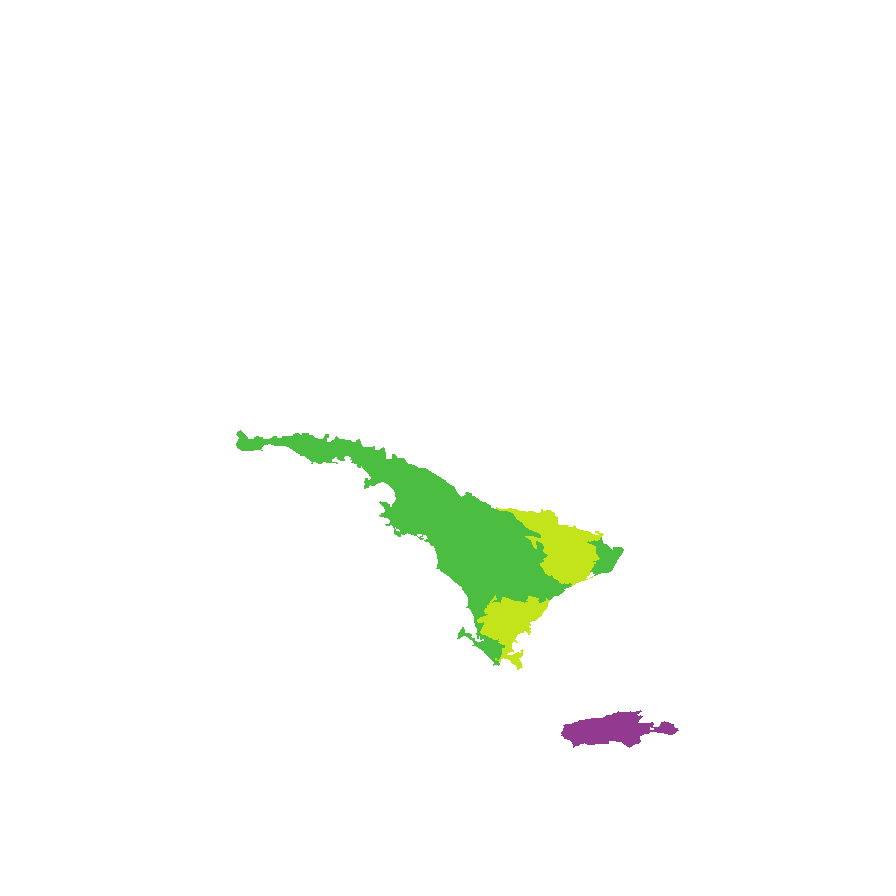
Botanical art
Prior names
Westringia grevillina
Westringia cinerea
Westringia angustifolia
Common names
Shore Rosemary
Shore Westringia
Etymology
Westringia named after Dr Johan Peter Westring (1753-1783), a Swedish physician and writer on lichens. Dampieri named after William Dampier (1651-1715), 18th century englishman who collected Australian plants which are still preserved in the British Museum at Oxford.
Distribution and status
Found along the west coast of the Eyre Peninsula in South Australia, growing in coastal situations on beach sands, sand dunes or limestone cliffs, and on small off-shore islands. Also found in Western Australia. Native. Uncommon in South Australia. Common in Western Australia.
Herbarium regions: Eyre Peninsula, Kangaroo Island
NRM regions: Eyre Peninsula, Kangaroo Island
AVH map: SA distribution map (external link)
Plant description
Dense shrubs to 1.3 m high with triangular to quadrangular or subterete branches, smooth and covered in dense hairs. Leaves in whorls of 3 or 4 rarely 5, narrowly ovate to narrowly oblong to linear, to 40 mm lonh and 3 mm wide, base cuneate, margin entire and recurved, densely hairy. Flowers tubular, white with purple, red, yellow and/or brown dots surface of tube and mouth, or pale-purple, pale-mauve to lilac with dots absent. Flowering throughout the year. Fruits are dark brown woody capsule to 2.5 mm long, with four segments. Seeds are brown ovoid seed to 3 mm long and 2 mm wide, with a large plug on one side. Seed embryo type is spatulate fully developed.
Seed collection and propagation
Collect seeds between September and November. Collect capsules that are fat and turning brown. A lot of time will be required to collect sufficient amount of seeds. Place the capsules in a tray and leave to dry for one to two weeks. Then rub the capsules gently with a rubber bung to dislodge the seeds. Use a sieve to separate the unwanted material. Store the seeds with a desiccant such as dried silica beads or dry rice, in an air tight container in a cool and dry place. Seed viability tend to be very low in this species and good seed set will depend on good season. From one collection, the seed viability was low, at 35%. This species has physiological dormancy that needs to be overcome for the seed to germinate.
| Location | No. of seeds (weight grams) | Number of plants | Date collected | Collection number Collection location | Date stored | % Viability | Storage temperature |
|---|---|---|---|---|---|---|---|
| BGA | 1,100 (1.42 g) | 30 | 18-Sep-2014 | TST741 Eyre Peninsula | 1-Jan-2016 | 50% | -18°C |
Number of plants: This is the number of plants from which the seeds were collected.
Collection location: The Herbarium of South Australia's region name.
% Viability: Percentage of filled healthy seeds determined by a cut test or x-ray.